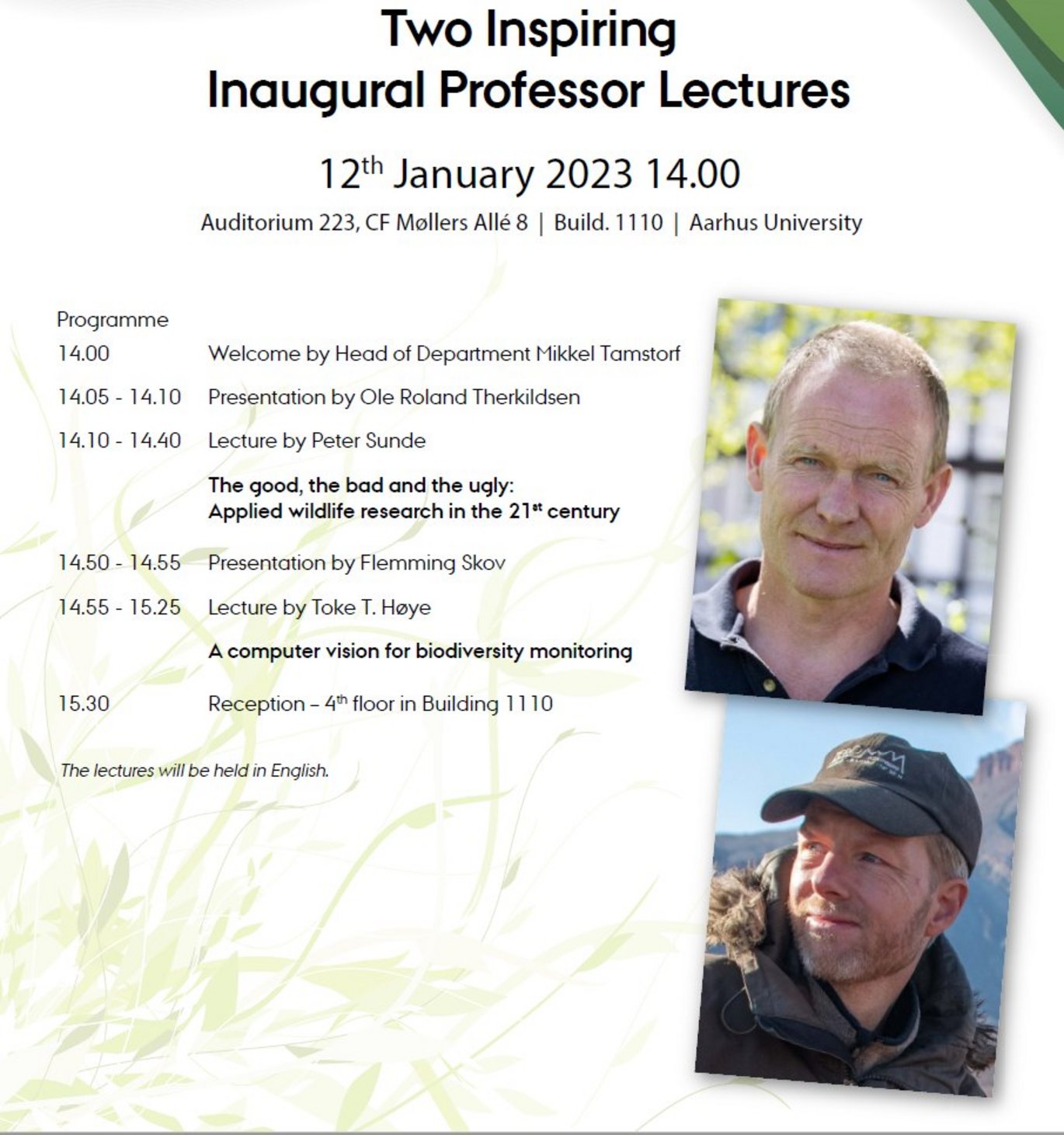Two Inspiring Inaugural Professor Lectures
You are cordially invited to join the official inaugural lectures of: Peter Sunde, Professor at Wildlife Ecology, Department of Ecoscience & Toke T. Høye, Professor at Biodiversity, Department of Ecoscience

APPETIZERS
The good, the bad and the ugly: Applied wildlife research in the 21st Century - by Peter Sunde
From its very inception, wildlife research has been rooted in the desire to improve the management of wildlife populations and hence is, by definition, applied research. Over time, the research focus and the interwoven management interests have broadened from being largely population orientated (harvest, pest control, conservation) to increasingly embrace species-mediated ecosystem effects and to involve those citizens for whom and by whom the populations are managed. In my talk, I will outline the societal and environmental context within which wildlife research strategies are and should be defined, designed and conducted in order to provide the optimal guidance for developing policy and ultimately shaping management decision-making. As wildlife management is a never-ending process in an ever-changing world, research to support effective management must address questions and provide answers long before society and especially those responsible for management are even aware that they need them. This demands continuity and a long-term research perspective with strategic investment in collection of ecological data series. Based on specific examples, I exemplify these principles based on recent, ongoing and proposed research on Danish terrestrial mammals and owls, characterized by different levels of socio-economic complexity. The simplest species case-studies involve no serious conflicts of interest (‘the good’, e.g. conservation studies of dormouse, little owl and hare). More complicated instances involve resolving conflicting interests over management aims (‘the bad’), exemplified by Danish red deer. The most challenging species are those with established underlying value conflicts, which consequently become political battlegrounds for deeper societal conflicts (‘the ugly’: e.g. wolf). Finally, I outline what I consider the most important focus areas in research management issues for terrestrial mammals in Denmark and Central Europe for the decades to come.
A computer vision for biodiversity monitoring - by Toke T. Høye
In the context of ongoing species loss and habitat degradation and the parallel rise in societal ambition to halt these trends and restore ecosystems, there is a critical demand on standardised biodiversity monitoring data. An example of this concerns the potentially global decline of insects. Advances in computer vision and deep learning can help us to better understand mechanisms underpinning species responses to environmental change. In this respect, cameras can effectively, continuously, and non-invasively perform observations throughout diurnal and seasonal cycles. When trained on these data, deep learning models can provide estimates of insect abundance, biomass, and diversity. Further, deep learning models can quantify variation in phenotypic traits, behaviour, and interactions. However, to reach this transformative goal, international collaboration and coordination on a range of outstanding challenges is critical. Such challenges include defining minimal requirements and standards for hardware design, recording software, metadata collection, machine learning models, analyses pipelines, and the integration with existing monitoring programs. In this presentation, I will demonstrate how image-based insect monitoring can complement existing approaches and generate automated and globally standardised entomological data. Furthermore, I will outline some of the outstanding logistical, technical and analytical challenges. Finally, I will present steps towards global collaboration on the implementation of image-based biodiversity monitoring and highlight future research avenues to facilitate the transition of these technologies from the current level of demonstration to broad scale application
